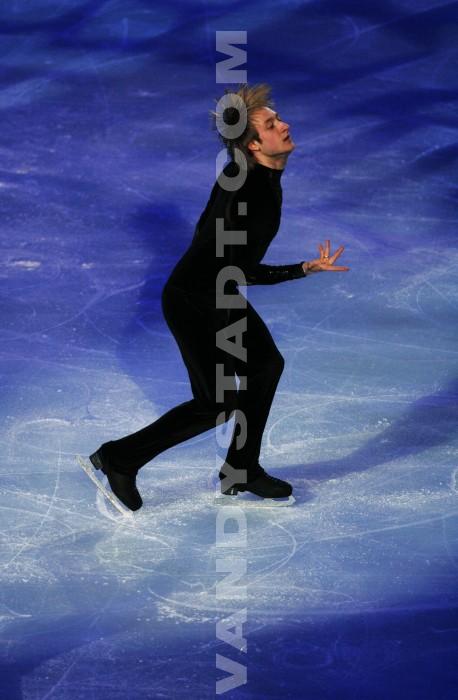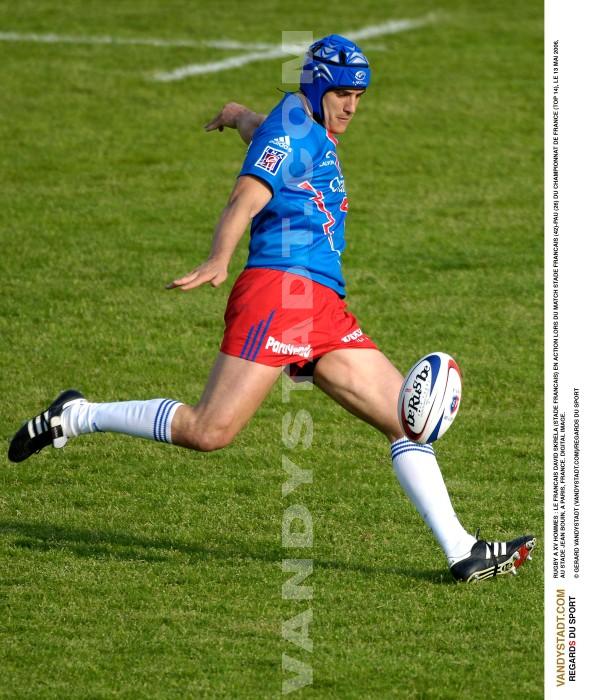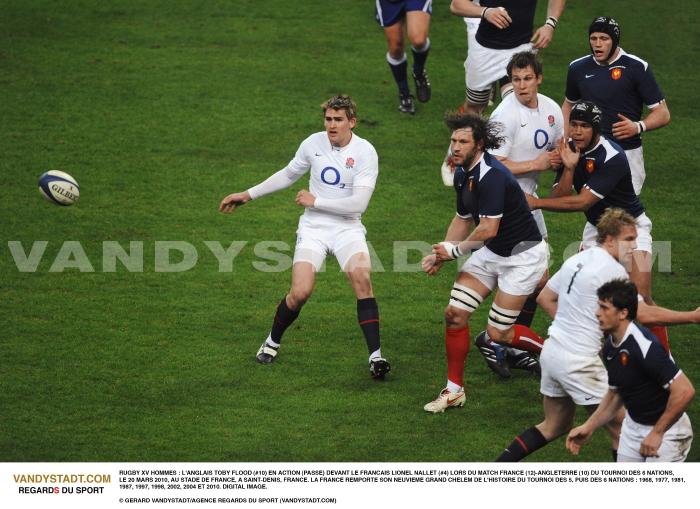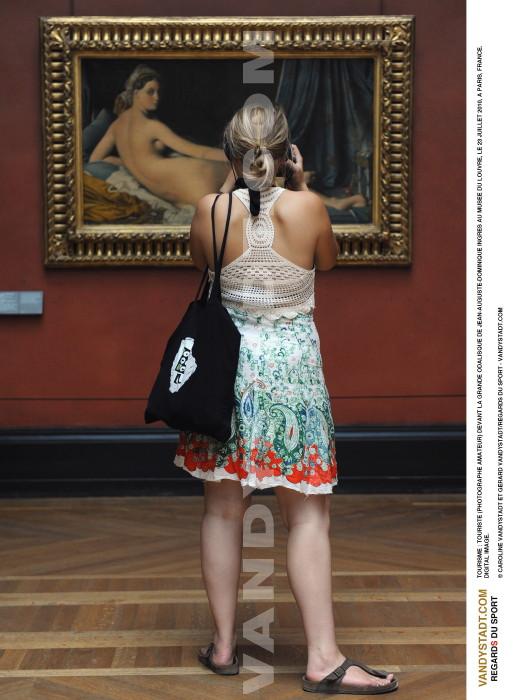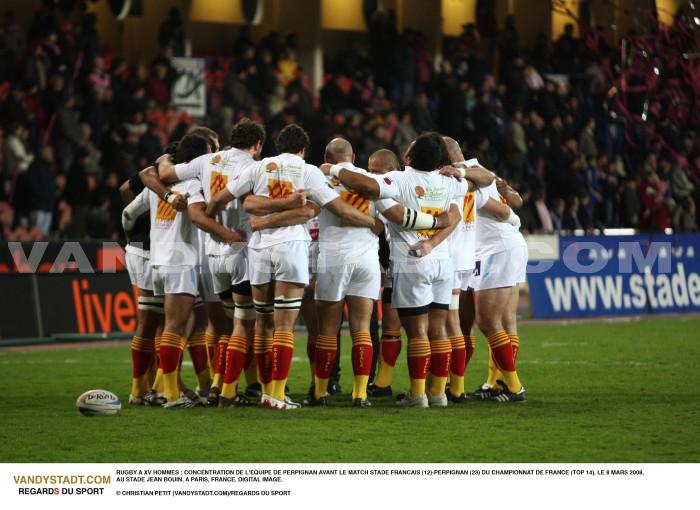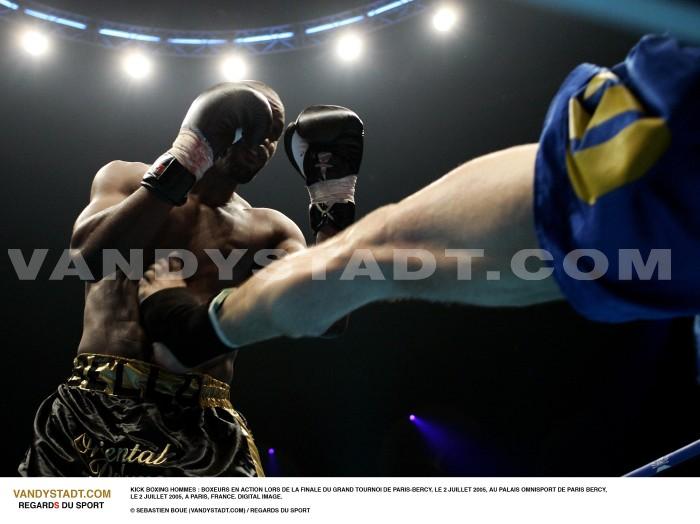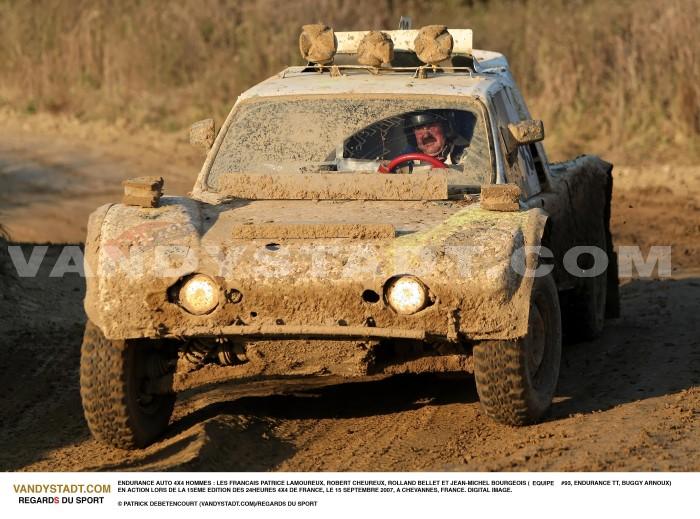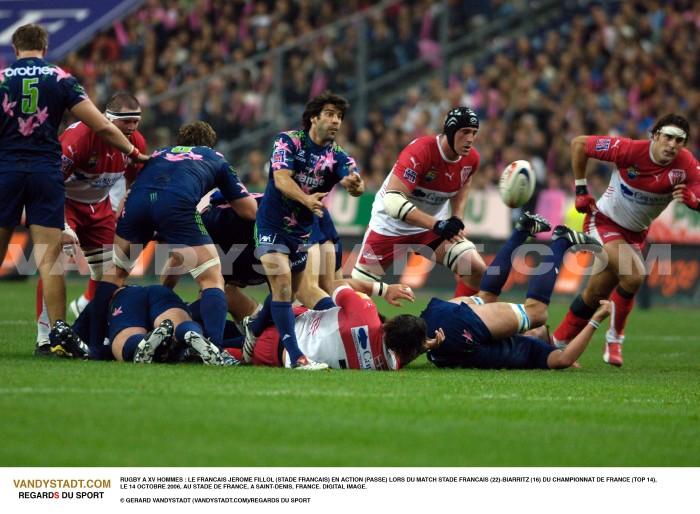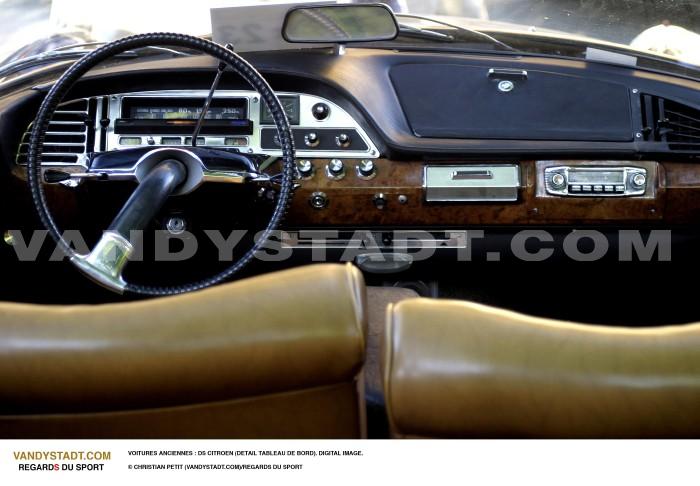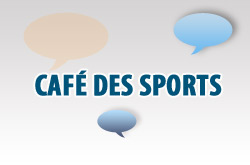Badminton - Badminton history
Badminton - Olympic Sports
![]()
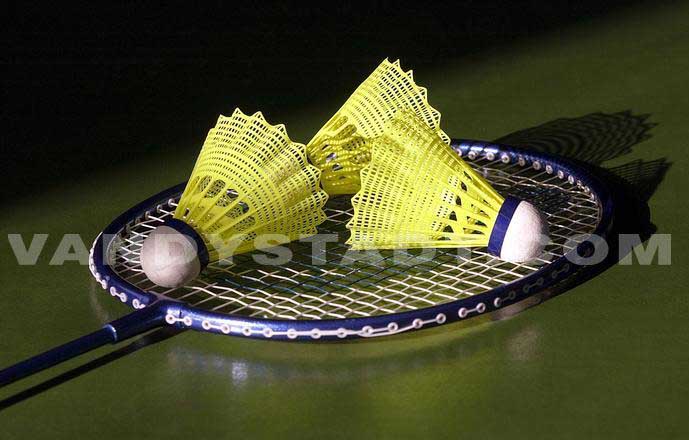
History
"Badminton" English town in Gloucestershire. It is also a "driving game played on a court. Related to the courts."
A shuttlecock game existed for over 20 centuries in Greece, Japan and China. We find traces in Brazil, Portugal and India.
It seems very difficult to place geographically and historically the origins of badminton. Currently, driving enthusiasts, leaning on this subject, particularly through engravings or other documents. Through research of this type, we find that
ers used for flying games fairly similar in their principles driving today. In Asia, we find traces of engravings evoking a shuttlecock game played so curious ... with striking the ankle but also with snowshoes. In Europe there are still texts on the "wheel play" as the book written by Henry-René d'Allemagne "Sports and games of skill" published by Hachette at the beginning of this century. " We learn that the game would have been flying in France cited in a manuscript of the sixteenth century. The game was popular as a driving game from court to France. An engraving of 1688 shows a part of flying at three, where a young knight seems to have great difficulty in standing up to two ladies.
The game was also driving a popular game played in all provinces. Originally composed of a sort of cork with only two pens, it was then called the pilvotiau (Champagne). They were also used chicken feathers to decorate it, hence the name coquantin (apparently known as François 1er). In Anjou, the wheel was called Loggerhead because it was covered with feathers shrike or because it evoked the shape of this bird. In Lyon, as he called picandeau magpie feathers were alternating black and white. The rackets were made of wood formatted (the handle was formed of two pieces together side by side), the rope was made of oiled string or intestines. If the French were among the first to practice the game of flying, he returned to the British honor of having invented badminton, inspired by the 'Poona', a game of racket India played with a light ball made of feathers. In 1873, the duke invited the British officers returning from India at a luncheon in his estate, Badminton House. They played the 'Poona' by replacing the ball by a champagne cork in which they put feathers. The game was called 'Badminton' in the name of the property of the Duke.
The first rules were published in 1877 by Colonel Dolby (1851-1921), one of the founders of the sport and the first President of Federation of Badminton
, founded by him in 1893. It organizes since 1899 the tournament's most prestigious badminton, "theAll England Championship.
The International Federation was created in 1934 (First Nations: England, Wales, Ireland, Scotland, Denmark, Netherlands, Canada, New Zealand, France and India in 1936 currently has 148 member countries).
The first major international competition was held, was the Thomas Cup (World Championship team men), and theUber Cup (the equivalent for women), the Sudirman Cup (the World Championship by mixed teams) and the World Championship in
iduel in 1977.
Introduced in France in the early 20th century
French Federation Badminton (FFBA) was created much later, in 1978.
Since its inception, the number of graduates has been increasing steadily.
The French Federation Badminton organized since 1987, international competitions in France: Open de France until 2004 Internationaux de France 2007, 2008 and 2009, stage circuit SuperSeries and the World Championships in Paris in 2010.
Over the past ten years the number of licensees reported a 100% increase! The bar of 100,000 was reached in 2005 and the figures now exceeding 140,000.
Badminton was a demonstration sport at the Olympic Games in 1972 and 1988 and entered the 1992 Olympic singles and doubles and mixed in 1996 (it is the only Olympic sport with a mixed race).
Only five different nations have won Olympic gold since 1992: China, Indonesia, Korea and Denmark.
Olympic badminton consists of five events: single and men's doubles, ladies singles & doubles and mixed doubles. Each of these events occurs in the form of a knockout tournament, the top eight players or pairs seeded.
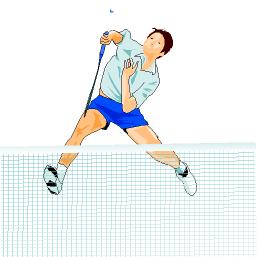
Currently, badminton is played in over 150 countries on 5 continents and has approx. 100 million practitioners and 2 million licensed.
Rules and Principles
Badminton is played with a racquet and a shuttlecock, generally plastic for beginners and pen to the players.
To start a match, raffling with a coin or a wheel.
The winner has the choice to serve or receive first or the choice side of the field.
Principle
Two players or two teams compete on a field by passing a "flying" over a net with rackets, according to precise rules.
|
There are 5 disciplines: Single Lady Single Male Women's Doubles Men Double Mixed Doubles |
||||||
Facilities
It plays normally on land cover and the soil must be hard.
The short
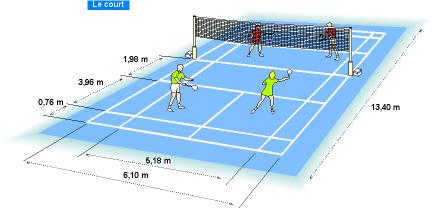
The room must have a ceiling of at least 6 feet high and there must be a net supported by two poles of 1.55 m. Its height allows the attack (game flat and plunging) and sometimes requires lifting the wheel (defense).
Dimensions:
- Single 5.18 mx 11.88 m
- Duplicate 6.10 mx 13.40 m
Net height: 1.55m
The poles and the net
The rigid poles have a height of 1.55 m.
The net must be thin string tanned square mesh (not less than 15 mm, not more than 20 mm), having 76 cm in height and be lined with a white ribbon of 76 mm, placed astride the upper and crossed by a cable to allow the tension and the mounting poles.
In the center top of the net should be 1.524 m from the ground and 1.55 m poles.
Equipment
Snowshoes
They weigh approx. 155 g, has a length of 68 cm and are similar to those of tennis. The tension of the strings varies between 7 and 11 kg for the fans (about 14.5 in the pros).
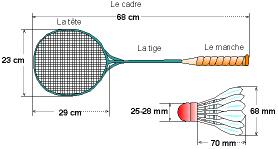
Namely: a professional player uses 10 rackets to every tournament. It abyss twenty per year.
Wheels
The wheel is composed of a cap and a skirt.
Wheels must weigh between 4.74 and 5.5 grams and are 14 to 16 feathers 70 mm (goose, duck or plastic) attached to a head in cork (bouchon) covered with red leather 2 5 cm in diameter (to stabilize its flight path). The feathers must have a length of 6.5 cm and a width of 5.4 cm in height.
The wheel has already been clocked at 336 km / h in men and 275 km / h in women (cons 207 km / h in women and 249 km / h in men in tennis!)
Holding
Appropriate dress is required. Free Color (clear desired).
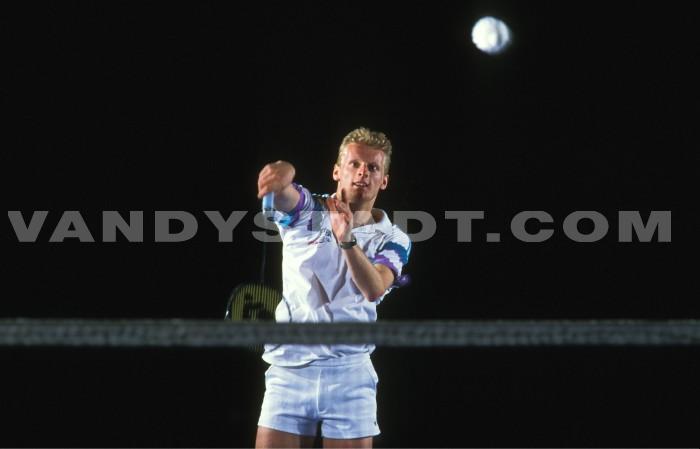
The duration
Indefinitely. A 5-minute break is scheduled between the 2nd and 3rd set.
The main rules
General
Is played in singles or doubles;
It plays best of 3 sets;
Change of ends in the 2nd and 3rd set + in the middle of the 3rd set.
When the score reaches the first 11 in each set, players receive a case of 60 seconds.
Players also receive a break of 120 seconds between each set.
During the match, he allowed players to receive advice, only when the wheel is not at stake
During stops in 1 minute and 2 minutes, each side may be joined in the field by 2 people maximum.
A badminton match consists of three rounds. Before the first round, we shall draw lots to determine which player will serve first. The loser must return the ball. The opponent can score points against the camp in the service; to win the game, you have to score 21 points. In doubles matches, the teams have only one service rather than two.
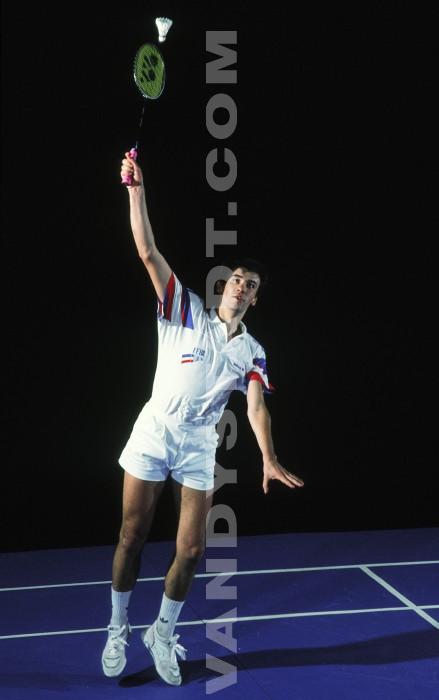
Single and double
Badminton is played in singles (trade is more air and tend to move the opponent by alternating long efforts and acceleration) or double and mixed (speed of play and decision)
The service :
The steering wheel must be hit below the waist with the head of the racket significantly lower than the main server. (I am not strong enough in drawing to show you!) The service must be carried diagonally on the basis of service areas; In singles, the player is right if it has an even number of points and left odd number. In doubles, the server sends the opponent flying towards situated diagonally. Each player has a place determined by the number of points his team and will be during the match, successively server and receiver.
Typing :
All the knocks "on the fly" no bounce is permitted. The steering wheel can touch the upper band of the net, even the service. Please take the service to mark the points. In doubles, and after the engagement, the steering wheel is hit by either one or the other but must go directly from the other side of the net. (Passes are not allowed) If they run the game, one goes to the net, the other covers the back. If they suffer the game opposing each covering one side of the field at the bottom of the net.
In mixed man covers the back of the field, while the woman attacked the net everything that crosses its path.
So it is a sport "mixed". Indeed, one error Interclub meet in regional championship competes in eight games, men or 2 doubles, 1 double female, 3 male singles, 1 single lady, 1 mixed doubles.
Counting
The game takes place in 2 sets of winners with 15 points extension of 1 or 3 points to 14 over for the simple man and doubles. The game takes place in 2 sets of winners with 11 points extension of 1 or 3 points to 10 over, only this time just for the lady.
Tennis Badminton
Time of Match 3:18 1:16
Actual playing time 18 minutes 37 minutes
Number of trade 299 146
Number of hits 1004 1972
Distance traveled 3.2 km 6.4 km
Maximum speed of the ball / flying 230km / h 260km / h
Services
1. Doubles
The game starts by the internal player occupying the right half-court team that serves first.
This player is on the enemy occupying the half-court diagonally opposite.
If a foul is committed by the team that serves, the service passes to the player's half-court right opposite (the team that serves at the beginning of the party is entitled to only one service).
If the service is not returned or a foul is committed by the opposing team, the serving team scores a point and the players of the team changing room service, the server is placing on the half - short left and performing the service on the player's short half-left opposition.
As long as a team will serve this movement being alternately (the players of the team changing room service only when a team scores a point).
Each time the service passes to the opposing team, it will be done first by the player on the half-court law.
2. Singles
The players serve and receive in their half-court right when the respective server's score is 0 or an even number.
The players serve and receive in their half-court left respectively when the server's score is odd.
Both players must change their half-court after each point.
Fouls
Only the team that serves marks the point of fault on the opposing team.
When a foul is committed by the team that serves no point mark. In doubles, the service places the second player in team and singles, the service changes later.
It is a foul:
1. When the service drive is hit above the waist level of the player who serves or when the server hits the steering wheel, head of the racket is higher than the hands.
2. While serving, the wheel does not fall within the half-court diagonally opposite the server.
3. If the server is not in the court where he must run the service or if the player of the opposing team must receive the service is not in the half-court where he would normally receive.
4. If before or during service, a player made a preliminary feint with intent to deceive.
5. If during the service or game, the wheel falls outside the limits of the court, if it passes under the net or through it or if it falls in front of the net, if it touches the roof or walls or a player or their clothing (a wheel falling on any line of the court is deemed to fall within the court).
6. If, before passing the net, the shuttle is hit by the opponent (although the opponent may, after hitting the steering wheel, shift his racket over the net).
7. If, while the shuttle is in play, a player touches the net or poles with her body, some of his clothes or with his racket.
8. If the shuttle is hit twice in succession by the same player or successively by a player and his partner, or if the move is not fair.
9. While in game, a player hits the wheel (unless in so doing, he makes a good return) or is struck by the wheel, lost item, regardless of whether inside or outside the limits of short.
Wheel play
Rackets without rules is engaged with a steering wheel a little heavier, most often without a net, outdoors, with equipment suited to a measured effort.
He is currently trying to return the shot as long as possible without creating problems with its "partner".
Both players try to join because the success of longer trading, trying best to address the vagaries of the wheel paths dictated by the wind.
Its value lies in its leisure aspect, can be increased by a few tips that will tend to make a sports game conducive to the future practice of badminton hall.
- 261 km / h: the speed record for a sports racket with a smash directed by Englishman Simon Archer .
GLOSSARY
Cushioning: knock softly and with finesse to the steering wheel and falls quickly behind the net on the opponent's court.
Before Ground: Tiers before the court, located between the net and the short service line.
Rack of service: An area in which service must land.
Passing shot: Coup that goes beyond the opponent or the opposing team.
Forehand: Coup used to return a ball to the right of a player on the left and a left-handed player.
Winning move: Rapid Fire struck directly in the court of the opponent so it can not be returned.
Coup mid-court: Court struck low and mid-court, effective in two games against a forward-backward training.
Spoons: Blow gently played by hitting the shuttlecock with a flick of the wrist.
Cleared: Coup sent later in the opponent's court.
Release of attack: Coup offensive sent very far short of the opponent.
Clearance Defense: Coup sent very defensive forward in the short to the opponent.
Doubles: Game in which two individuals face two opponents in teams.
Drive: Cheap Shot and fast along a horizontal flight over the net.
Exchange: A series of blows exchanged between opponents and leading to the award of each item.
Commitment: Coup aimed at making the driving game in the beginning of each exchange, also called "service".
Make a "timber" Coup permitted where the wheel touches the frame of the racket.
Fault: Violation of rules.
Thread: knock from the front of the court, hitting the net then falls steeply.
Fronde illegal move in which the shuttlecock is struck but not caught and held on the racket before being returned, also called a "bear" or "start".
Shuttlecock game: game played with a racquet and a shuttlecock, the ancestor of modern badminton.
Start: illegal move in which the wheel is not hit, but caught and held on the racket before being returned, also called a "bear" or "slingshot".
Let: Without minor rules to allow an exchange to be replayed.
Center Line: Line perpendicular to the net that separates the service areas left and right.
Bottom line: line delimiting the bottom of each short, parallel to the net.
Short service line: Line before the square of Service located at 1.98 meters from the net.
Long service line: line behind the area where a service has to land (which is also the baseline in singles, but located 83 cm inside the end line in doubles).
Lateral line double: Limit side of a short double.
Lateral line of simple bound side of a short simple.
Match: A series of games to determine a winner.
Mid-run: The central third of the court.
Poona: Game of the nineteenth century in India, named after the town of that name, with similarities to lawn tennis.
Porter: Make an illegal move in which the wheel is not hit, but caught and held on the racket before being revived, also known as "slingshot" or "start".
Location Central location in the center of the court to which a player tries to return after each shot, also called "middle position".
Middle position: Position located in the center of the court to which a player tries to return after each shot, also called "central position".
Extension: Decision to extend a game beyond its normal ending score if it does not separate the players from one point.
Fallout net: Coup struck from below and very close to the net, lifting the wheel just enough to clear the net, so it falls steeply on the other hand, tracing a trajectory hairpin.
Reverse: Coup used to return balls to the left of a right-handed player or the right of a left-handed player.
Ruse: Movement misleading disconcerting the opponent before or during the service, also called "sham".
Service: Coup aimed at making the driving game in the beginning of each exchange, also called "commitment".
Service flick: Fast rotation of the wrist and forearm used to surprise the opponent, transforming a seemingly mild blow to a passing faster.
Set: Part of a match that ends when one player or side has scored 15 points, corresponding to a set. .
Simple: Game in which one person confronts another.
Smash: Mighty Blow hit over the head directly into the opponent's court.
Copyright Sportquick/Promedi








